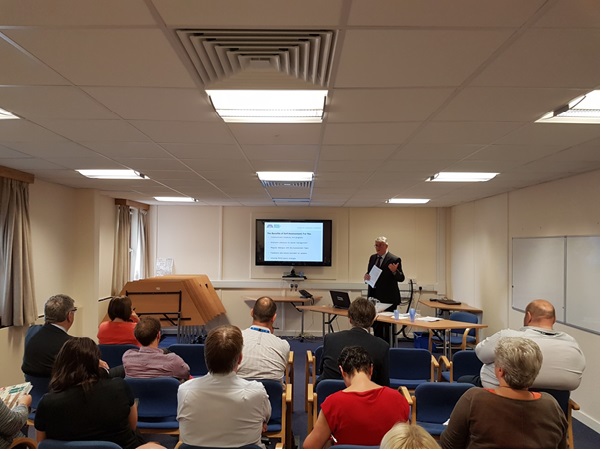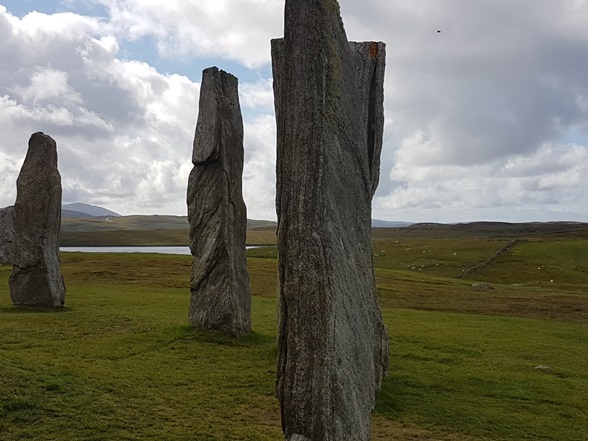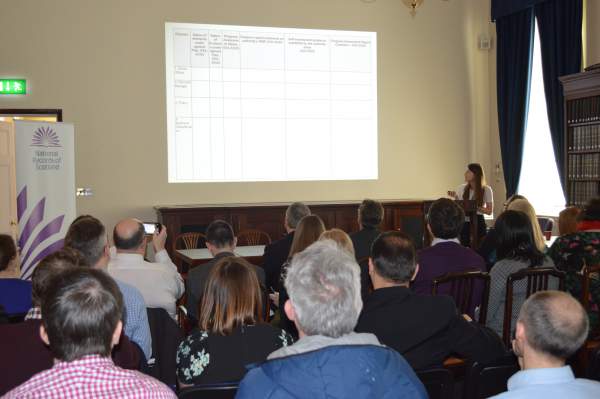Articles from 2017
Articles from 2017
7 December 2017
The Public Records (Scotland) Act 2011 (PRSA) Assessment Team recently passed a significant milestone with the agreement of the 200th Records Management Plan (RMP) on 31 October 2017. The public authority whose RMP was agreed was Tactran (Tayside and Central Scotland Transport Partnership). PRSA requires all scheduled public authorities to submit a RMP detailing the arrangements they have in place to manage their records.
We are also approaching five years since PRSA came into force on 1 January 2013. The Assessment Team’s aim was to have sent invitations to all public authorities on the original schedule to submit their RMPs within this five year timescale and this has been achieved. We have also received (though not agreed) all of the RMPs from all 219 named public authorities who were listed on the original schedule to the Act when it was first passed in 2011.
In some ways that is only the start of the process. Work continues on engaging with new authorities which have been added to the schedule since 2013 with a view to helping them develop robust RMPs for the Keeper’s agreement. We will also be focussing on helping authorities maintain progress on fully implementing their agreed RMPs by encouraging them to utilise the Progress Update Review (PUR) mechanism. This is a voluntary self-assessment process which allows authorities to inform the Keeper of changes to agreed RMPs, potential issues with records management provision and to highlight areas of good work that has been undertaken. The ultimate aim is to improve the management of records and information across the Scottish public sector.
28 August 2017
On Friday 18 August 2017 Hugh Hagan and Robert Fotheringham from the Public Records (Scotland) Act 2011 Assessment Team travelled to Stornoway to deliver a surgery on the Act to colleagues from Comhairle nan Eilean Siar (Western Isles Council), NHS Western Isles and Highland and Western Isles Valuation Joint Board. The day, which was very well attended, included the background to why the Act was needed, the practical steps required to develop a robust Records Management Plan (RMP) and an outline of the Progress Update Review (PUR) mechanism which is currently being rolled out to public authorities. This was another example of where the Keeper’s Assessment Team has taken the opportunity to engage with colleagues from public authorities ‘on their own doorstep’ and this was certainly appreciated by attendees, who were able to ask questions and highlight their concerns about aspects of compliance with the Act.

Seonaid McDonald, Comhairle nan Eilean Siar Archivist, also delivered a presentation on the recent refurbishment of the Archive and the types of public and private records collected. The talk also highlighted the need to ensure that arrangements are put in place so that records selected for permanent preservation find their way into an appropriate archive, as required in Element 7 of the Keeper’s Model Records Management Plan.
After the event had finished we were very fortunate in having a few hours to spare before flying back to Edinburgh. Seonaid very kindly took us to see the Callanish Stones, which was a fantastic experience. She also gave us a tour of the new archive and museum in Lews Castle, which features a display of the Lewis Chessmen. We also had just enough time to stock up on Stornoway black pudding before catching the flight home!

June 2017
In June the Assessment Team formally announced the introduction of the Progress Update Review (PUR) mechanism. This represents the culmination of two years’ work of engagement with stakeholders and wider sector representatives to develop a means of facilitating, and reviewing, self-assessments conducted by authorities of their records management arrangements. Reflecting the spirit of continuous improvement enshrined within the Public Records (Scotland) Act 2011, the PUR mechanism has been developed to help authorities demonstrate their success in closing gaps in provision since agreement of their Records Management Plan (RMP) and to help them identify where further resources are required. With over thirty authorities invited to date and several already declaring their willingness to engage in the process, we envisage that the PUR mechanism will prove a useful and informative tool.
Due to the process still being in the early stages of its implementation we have presented, and will continue to provide, talks to public authority contacts to discuss the mechanism and to address any questions raised. Information on the process is now available on the website, with links to the Guidance Document and the Invitation Schedule. Two authorities, including the Keeper of the Records of Scotland, have already completed the process and we intend to publish all PUR Final Reports on the website to highlight the commitment of authorities to regular self-assessment and to share best practice with colleagues across Scotland’s public sector.
8 March 2017
Our latest stakeholder forum, held at General Register House at the National Records of Scotland on 27 February, explored the development of the Progress Update Assessment Report (PUAR) mechanism which was first announced in the Keeper’s 2016 Annual Report. The Assessment Team spoke of the benefits for authorities in undertaking a regular self-assessment of their Records Management Plans (RMPs) and outlined the procedures and templates currently being developed through consultation with our stakeholders. Alex Fitzgerald from East Lothian Council, who kindly agreed to test out the new self-assessment mechanism, highlighted the advantages it offers colleagues in terms of communicating their hard work and progress and sustaining the momentum of embedding good records management within public authorities.
The large number of attendees from a wide range of public authorities expressed support for the PUAR mechanism and spoke honestly about their needs in a Q&A session following the presentations. The Assessment Team welcomed these comments and are using them to develop a Guidance Document to aid colleagues in conducting a PUAR. The Team intend to publish this Guidance and other helpful information on this website in the coming months. Further comments colleagues may have concerning how we develop and improve the PUAR mechanism will be gratefully received by the Assessment Team.

